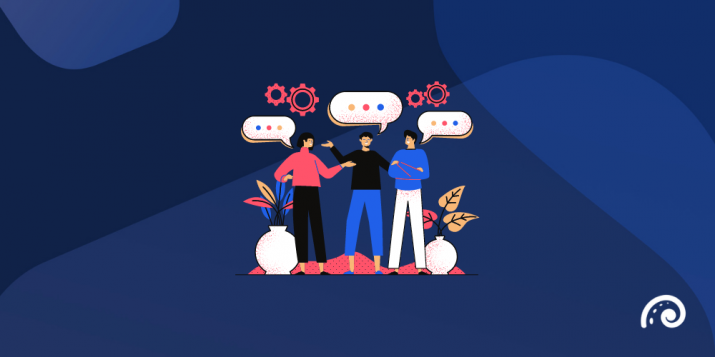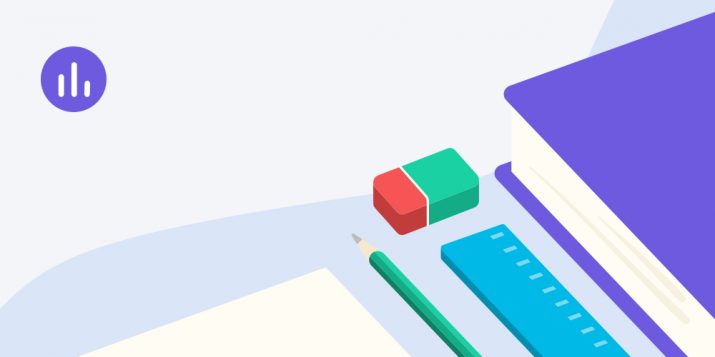
The B2B marketer’s guide to building a successful Facebook bot
Being able to message companies directly without waiting in line or emailing them makes it incredibly convenient and fast for users to ask questions, offer feedback, or simply build a connection with you. That’s why Facebook Messenger is ideal for communicating with prospects and customers.
According to Facebook stats, a whopping 60 billion messages are sent per day through its two chat products—WhatsApp and Messenger. That’s why Facebook is making huge strides towards improving and personalizing its Messenger tool, and part of this mission was building a new service called “ChatBots.”
What is a bot anyway, and how can you build one?
A “Bot” is a term used to describe an automated interaction between a software and a user, with the goal of making it feel “natural”.
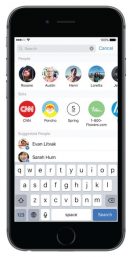
Facebook Messenger’s new Chatbots automate conversations. And no matter how big or small your company is, anyone can build one! Given the tools from Facebook, you can design and customize the user experience and interaction with the bot by picking the message templates and using different images, texts, and rich call-to-actions.
- Welcome Screen. Once users select your bot to start a conversation or click the “Message Us” plugin on your Page, they will come across the “welcome” screen. This is where you write a short description of who you are and what they can expect from your bot.
- Custom Templates. You can decide how you would like your bot to interact with users. Messages can be formatted in multiple ways – whether you include simple text and images or use Facebook’s structured templates to customize the message bubbles.
- Carousel. Facebook also allows you to implement a carousel – a list of items or images with appealing call-to-actions that users can slide through and click to open a web page or trigger a callback.
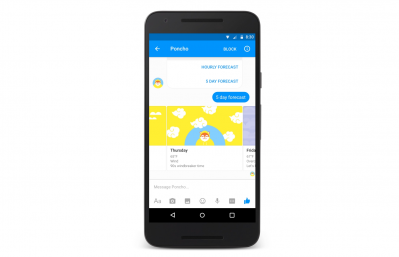
As Mark Zuckerberg highlights, “No one wants to have to install a new app for every business or service they want to interact with.” This friction, which inevitably exists between your company and users, is easily broken if you build a bot into the existing Messenger platform that is already adopted by over 900 million people every month.
This chatbot is unique because it can understand conversational language and gradually learn from it, turning natural language into structured data.This is all done through the wit.ai Bot Engine.
The ultimate goal is to drive a rich and meaningful customer experience based on every single interaction with your bot. In other words, the more users chat to your bot, the smarter it becomes!
How can people find your bot?
How easy will it be for people to find your bot?
Unfortunately for marketers, the answer is – ‘It depends’.
One challenge is that people who are connected to your Facebook company page cannot see if you have a Bot straight from there. Instead, they must search for your company’s name on Facebook Messenger.
For companies with a well-established reputation and a high follower base, it makes it easier and more enticing for people to discover your bot and start a conversation. However, if your company is relatively small and fresh, you might need to promote this new communication channel inside your customer base and across the networks.
Regardless, Facebook released a number of ways to help simplify the connection and finding process:
Usernames. Below your company’s name, you now have a unique username (similar to Twitter) that can be set, edited, and searched for on the Messenger App. This makes it easier for people to identify and message your bot.
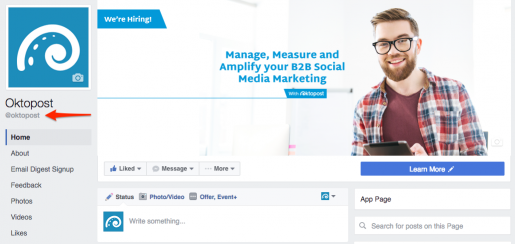
Messenger links and messenger codes. Messenger Links: Use your page’s username to create a short and memorable link (m.me/username), so when someone clicks it, a conversation is automatically opened in Messenger. Messenger Codes are very similar. They serve as a visual thumbprint that people can scan in Messenger using their phone camera to open a thread with your company or bot. You can easily paste your link or code into any marketing channel to prompt people to contact you or your bot directly.
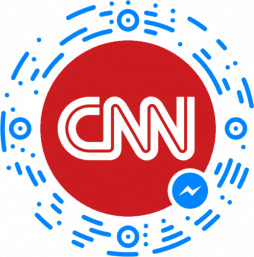
Messenger Buttons. You can easily embed these two plug-ins into your Company Page so that when someone clicks them, they can initiate a conversation with you or your bot.
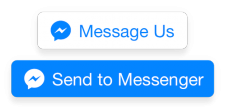
Custom Matching. This allows people to reach you in Messenger directly by searching for your phone number (if they have your consent to contact you). Conversations initiated in this way will be received as Message Requests – meaning you (or the bot) will have to accept this message in order to reply.
Recommended for further reading
Should you build a bot?
Considering you’re in the B2B sector, your audience is very likely already using Facebook heavily to achieve their business needs and is, therefore, likely to adopt Messenger as a communication tool.
However, you still need to consider that although the bot’s responses are automated, it requires: 1) investing in promotion 2) filling in if your bot cannot answer certain questions and 3) continuously monitoring the kind of experience you’re creating for users.
If you’ve established the groundwork for a Facebook chatbot, the next question you should ask yourself is: what goal am I trying to achieve?
Do you want to gain more exposure for your content? Are you looking to increase engagement? Perhaps you want to generate leads?
The entire interaction will take place on a mobile device, so your use case needs to be centered around that.
In general, B2B marketers can make the most of this new communication channel to build relationships with users, offer advice and expertise, or simply gain further insight and feedback.
4 interesting ways B2B marketers can use the bot:
If you decide to use the bot to interact with prospects and customers, there should be a right balance between automation and personalization.
Here are 4 ways B2B marketers can make the most of the bot:
Content subscription
ABC decided to create a bot of its own because it saw a great opportunity to provide its audience with information in a more natural and personalized way. Their NewsBot sends people daily news updates and responds to questions they may have.
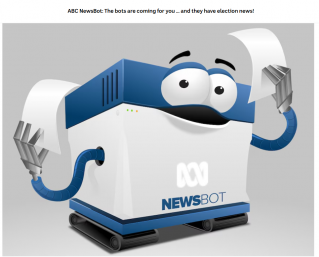
In the same way, B2B marketers can use a bot to deliver their content, from blogs to case studies, white papers, or even infographics in a more conversational manner. Imagine that users can ‘choose a topic/category’ they’re interested in and then subscribe to it, so they are always alerted whenever you publish content that fits their taste. Because of the conversational tone and setting, you, as a marketer, appear to be less self-promotional, and the pathway to conversion feels more natural for your audience.
Building relationships
As mentioned earlier, the chatbot interacts like a human, making it trusted by customers and brands. As a marketer, you can use it as another channel for people to connect with your company and contact you if they have any problems or questions regarding your product/service.
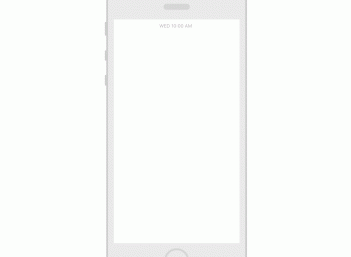
You can also make the bot send images, videos, and GIFs to make the conversation more engaging – just like speaking to a friend. Providing this kind of 1:1 communication is incredibly meaningful and allows customers to establish a loyal relationship with your brand.
Promoting events and product updates
Your bot can encourage automated subscriptions to upcoming webinars or contests you’re hosting and products and features you plan to release. Again, since the interaction is made to feel very convenient, delightful, and natural, your audience is more likely to accept and sign up for an event invitation or request direct product updates and demos.
Collecting data
Whether through content subscription, webinar sign-up, or a demo request, it’s important to ask your most interested audience specific questions regarding their position in the company, the type of marketing or sales technology they use, and any other relevant and useful contact information.
By gathering as much knowledge on your leads as possible, you can build a vivid profile of this person and collate this data in your CRM and marketing technology. The more data you have on leads, the better you’ll nurture them through your marketing automation platform. Knowledge of your prospects also serves as an advantage when salespeople initiate a phone or Skype meeting with them later in the funnel.
For B2B marketers to successfully engage audiences with chatbots, they must connect the interface to meaningful experiences, back-end business processes, and marketing technology that already exists within the organization.
Are you thinking of building a bot? Share with us some of your interesting use cases in the comments below 🙂
